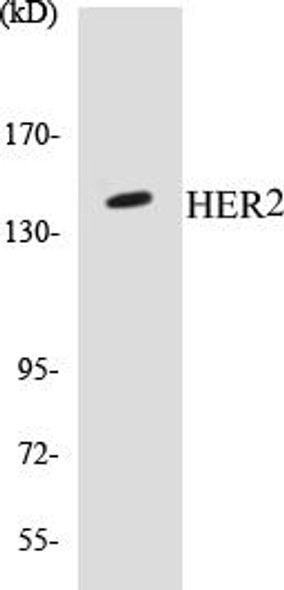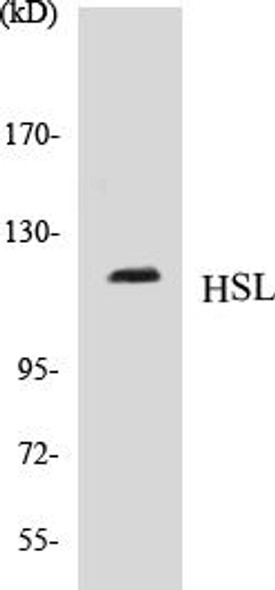Description
ATF3 Colorimetric Cell-Based ELISA Kit
The ATF3 Colorimetric Cell-Based ELISA Kit is a powerful tool designed for the precise measurement of ATF3 levels in cell samples. This kit offers high sensitivity and specificity, ensuring accurate and consistent results for a variety of research applications.ATF3, a transcription factor, is involved in a wide range of cellular processes, including stress response, cell differentiation, and apoptosis. Dysregulation of ATF3 has been implicated in various diseases, such as cancer, inflammation, and neurodegenerative disorders, making it a valuable biomarker for studying these conditions and exploring potential therapeutic approaches.
With the ATF3 Colorimetric Cell-Based ELISA Kit, researchers can easily and efficiently analyze ATF3 levels in cell cultures, providing valuable insights into the molecular mechanisms underlying disease development and progression. This kit is a valuable asset for any laboratory conducting research on ATF3 and its role in normal and pathological cellular processes.
| Product Name: | ATF3 Colorimetric Cell-Based ELISA Kit |
| Product Code: | CBCAB00112 |
| ELISA Type: | Cell-Based |
| Target: | ATF3 |
| Reactivity: | Human, Mouse, Rat |
| Dynamic Range: | > 5000 Cells |
| Detection Method: | Colorimetric 450 nmStorage/Stability:4°C/6 Months |
| Format: | 96-Well Microplate |
The ATF3 Colorimetric Cell-Based ELISA Kit is a convenient, lysate-free, high throughput and sensitive assay kit that can detect ATF3 protein expression profile in cells. The kit can be used for measuring the relative amounts of ATF3 in cultured cells as well as screening for the effects that various treatments, inhibitors (ie siRNA or chemicals), or activators have on ATF3.
Qualitative determination of ATF3 concentration is achieved by an indirect ELISA format. In essence, ATF3 is captured by ATF3-specific primary antibodies while the HRP-conjugated secondary antibodies bind the Fc region of the primary antibody. Through this binding, the HRP enzyme conjugated to the secondary antibody can catalyze a colorimetric reaction upon substrate addition. Due to the qualitative nature of the Cell-Based ELISA, multiple normalization methods are needed:
| 1. | A monoclonal antibody specific for human GAPDH is included to serve as an internal positive control in normalizing the target absorbance values. |
| 2. | Following the colorimetric measurement of HRP activity via substrate addition, the Crystal Violet whole-cell staining method may be used to determine cell density. After staining, the results can be analysed by normalizing the absorbance values to cell amounts, by which the plating difference can be adjusted. |
| Database Information: | Gene ID: 467, UniProt ID: P18847, OMIM: 603148, Unigene: Hs.460 |
| Gene Symbol: | ATF3 |
| Sub Type: | None |
| UniProt Protein Function: | ATF-3: This protein binds the cAMP response element (CRE) (consensus: 5'-GTGACGT[AC][AG]-3'), a sequence present in many viral and cellular promoters. Represses transcription from promoters with ATF sites. It may repress transcription by stabilizing the binding of inhibitory cofactors at the promoter. Isoform 2 activates transcription presumably by sequestering inhibitory cofactors away from the promoters. Belongs to the bZIP family. ATF subfamily. 4 isoforms of the human protein are produced by alternative splicing. |
| UniProt Protein Details: | Protein type:Transcription factor Chromosomal Location of Human Ortholog: 1q32.3 Cellular Component: nucleolus; nucleoplasm; nucleus Molecular Function:identical protein binding; protein binding; protein heterodimerization activity; protein homodimerization activity; transcription corepressor activity; transcription factor activity Biological Process: negative regulation of transcription from RNA polymerase II promoter; positive regulation of transcription from RNA polymerase II promoter |
| NCBI Summary: | This gene encodes a member of the mammalian activation transcription factor/cAMP responsive element-binding (CREB) protein family of transcription factors. This gene is induced by a variety of signals, including many of those encountered by cancer cells, and is involved in the complex process of cellular stress response. Multiple transcript variants encoding different isoforms have been found for this gene. It is possible that alternative splicing of this gene may be physiologically important in the regulation of target genes. [provided by RefSeq, Apr 2011] |
| UniProt Code: | P18847 |
| NCBI GenInfo Identifier: | 1168543 |
| NCBI Gene ID: | 467 |
| NCBI Accession: | P18847.2 |
| UniProt Secondary Accession: | P18847,Q5VTZ2, Q6ICQ9, Q7Z566, Q8WYM6, |
| UniProt Related Accession: | P18847 |
| Molecular Weight: | 14,314 Da |
| NCBI Full Name: | Cyclic AMP-dependent transcription factor ATF-3 |
| NCBI Synonym Full Names: | activating transcription factor 3 |
| NCBI Official Symbol: | ATF3 |
| NCBI Protein Information: | cyclic AMP-dependent transcription factor ATF-3 |
| UniProt Protein Name: | Cyclic AMP-dependent transcription factor ATF-3 |
| UniProt Synonym Protein Names: | Activating transcription factor 3 |
| Protein Family: | Activating transcription factor |
| UniProt Gene Name: | ATF3 |
| UniProt Entry Name: | ATF3_HUMAN |
| Component | Quantity |
| 96-Well Cell Culture Clear-Bottom Microplate | 2 plates |
| 10X TBS | 24 mL |
| Quenching Buffer | 24 mL |
| Blocking Buffer | 50 mL |
| 15X Wash Buffer | 50 mL |
| Primary Antibody Diluent | 12 mL |
| 100x Anti-Phospho Target Antibody | 60 µL |
| 100x Anti-Target Antibody | 60 µL |
| Anti-GAPDH Antibody | 60 µL |
| HRP-Conjugated Anti-Rabbit IgG Antibody | 12 mL |
| HRP-Conjugated Anti-Mouse IgG Antibody | 12 mL |
| SDS Solution | 12 mL |
| Stop Solution | 24 mL |
| Ready-to-Use Substrate | 12 mL |
| Crystal Violet Solution | 12 mL |
| Adhesive Plate Seals | 2 seals |
The following materials and/or equipment are NOT provided in this kit but are necessary to successfully conduct the experiment:
- Microplate reader able to measure absorbance at 450 nm and/or 595 nm for Crystal Violet Cell Staining (Optional)
- Micropipettes with capability of measuring volumes ranging from 1 µL to 1 ml
- 37% formaldehyde (Sigma Cat# F-8775) or formaldehyde from other sources
- Squirt bottle, manifold dispenser, multichannel pipette reservoir or automated microplate washer
- Graph paper or computer software capable of generating or displaying logarithmic functions
- Absorbent papers or vacuum aspirator
- Test tubes or microfuge tubes capable of storing ≥1 ml
- Poly-L-Lysine (Sigma Cat# P4832 for suspension cells)
- Orbital shaker (optional)
- Deionized or sterile water
*Note: Protocols are specific to each batch/lot. For the correct instructions please follow the protocol included in your kit.
| Step | Procedure |
| 1. | Seed 200 µL of 20,000 adherent cells in culture medium in each well of a 96-well plate. The plates included in the kit are sterile and treated for cell culture. For suspension cells and loosely attached cells, coat the plates with 100 µL of 10 µg/ml Poly-L-Lysine (not included) to each well of a 96-well plate for 30 minutes at 37°C prior to adding cells. |
| 2. | Incubate the cells for overnight at 37°C, 5% CO2. |
| 3. | Treat the cells as desired. |
| 4. | Remove the cell culture medium and rinse with 200 µL of 1x TBS, twice. |
| 5. | Fix the cells by incubating with 100 µL of Fixing Solution for 20 minutes at room temperature. The 4% formaldehyde is used for adherent cells and 8% formaldehyde is used for suspension cells and loosely attached cells. |
| 6. | Remove the Fixing Solution and wash the plate 3 times with 200 µL 1x Wash Buffer for five minutes each time with gentle shaking on the orbital shaker. The plate can be stored at 4°C for a week. |
| 7. | Add 100 µL of Quenching Buffer and incubate for 20 minutes at room temperature. |
| 8. | Wash the plate 3 times with 1x Wash Buffer for 5 minutes each time. |
| 9. | Add 200 µL of Blocking Buffer and incubate for 1 hour at room temperature. |
| 10. | Wash 3 times with 200 µL of 1x Wash Buffer for 5 minutes each time. |
| 11. | Add 50 µL of 1x primary antibodies (Anti-ATF3 Antibody and/or Anti-GAPDH Antibody) to the corresponding wells, cover with Parafilm and incubate for 16 hours (overnight) at 4°C. If the target expression is known to be high, incubate for 2 hours at room temperature. |
| 12. | Wash 3 times with 200 µL of 1x Wash Buffer for 5 minutes each time. |
| 13. | Add 50 µL of 1x secondary antibodies (HRP-Conjugated AntiRabbit IgG Antibody or HRP-Conjugated Anti-Mouse IgG Antibody) to corresponding wells and incubate for 1.5 hours at room temperature. |
| 14. | Wash 3 times with 200 µL of 1x Wash Buffer for 5 minutes each time. |
| 15. | Add 50 µL of Ready-to-Use Substrate to each well and incubate for 30 minutes at room temperature in the dark. |
| 16. | Add 50 µL of Stop Solution to each well and read OD at 450 nm immediately using the microplate reader. |
(Additional Crystal Violet staining may be performed if desired – details of this may be found in the kit technical manual.)






